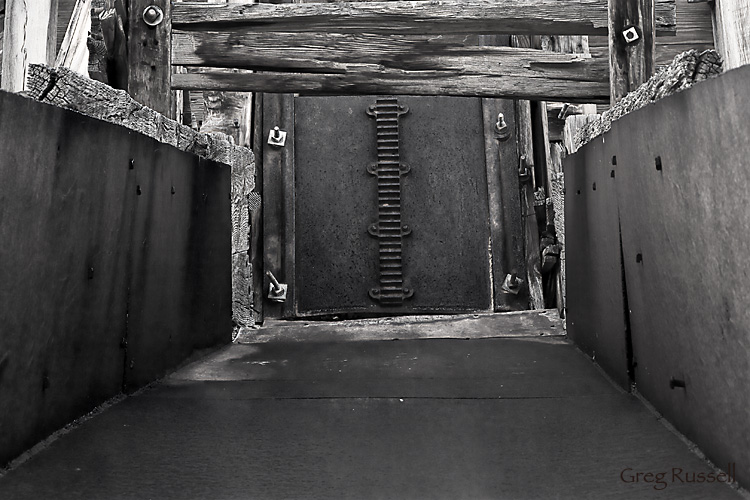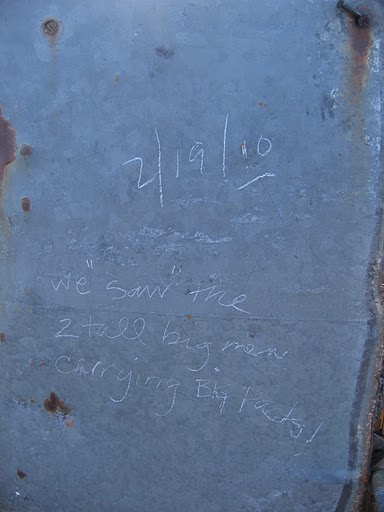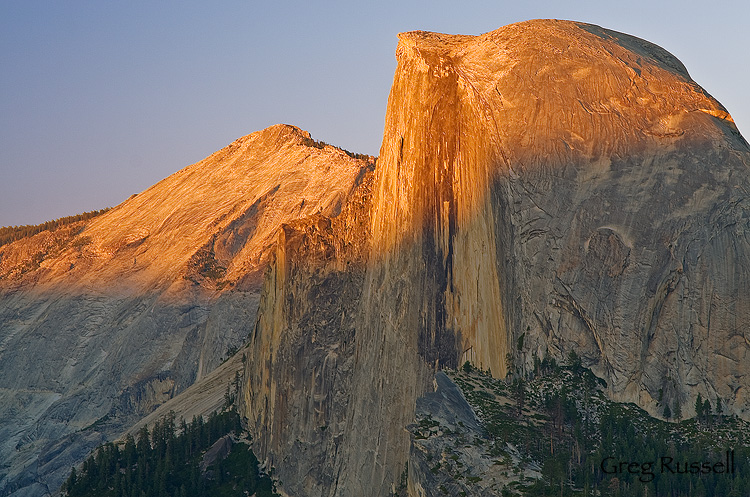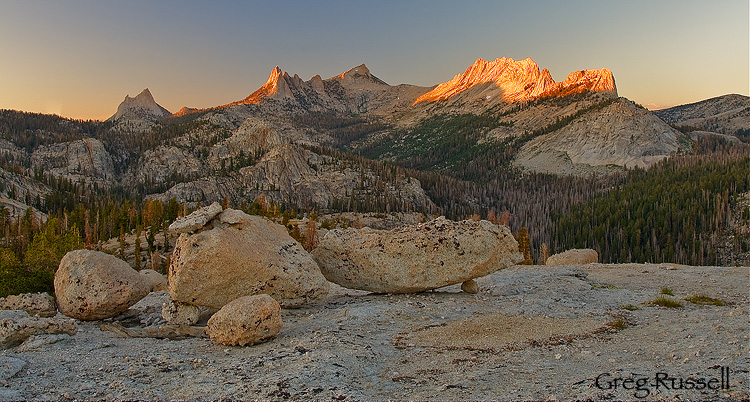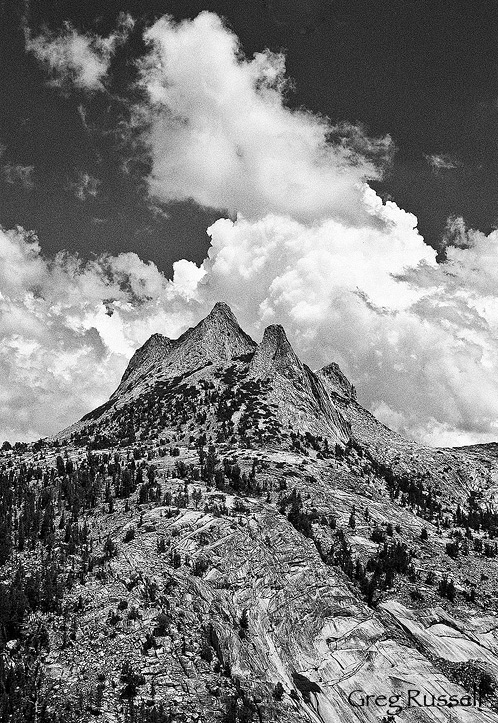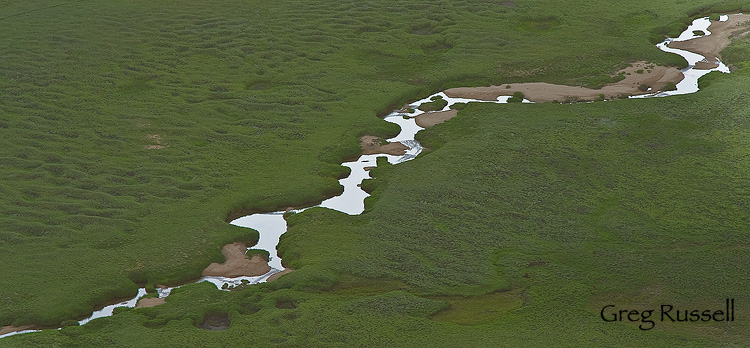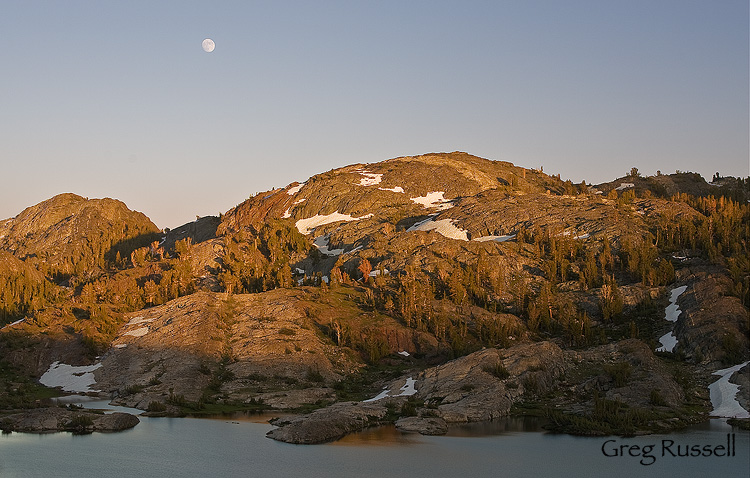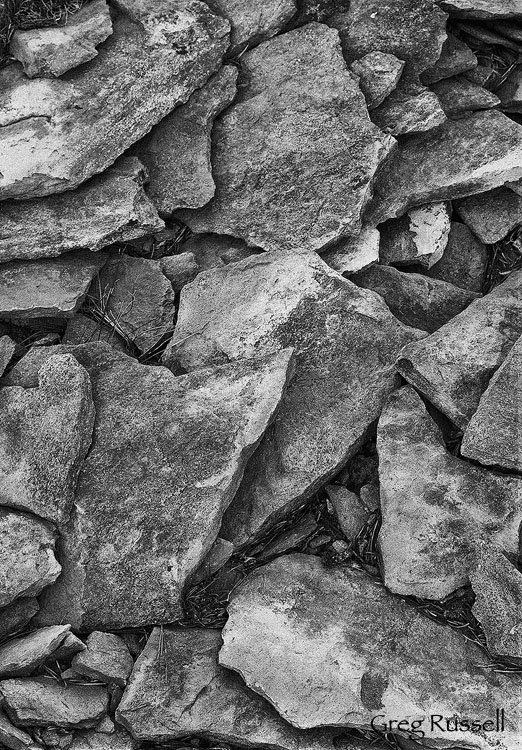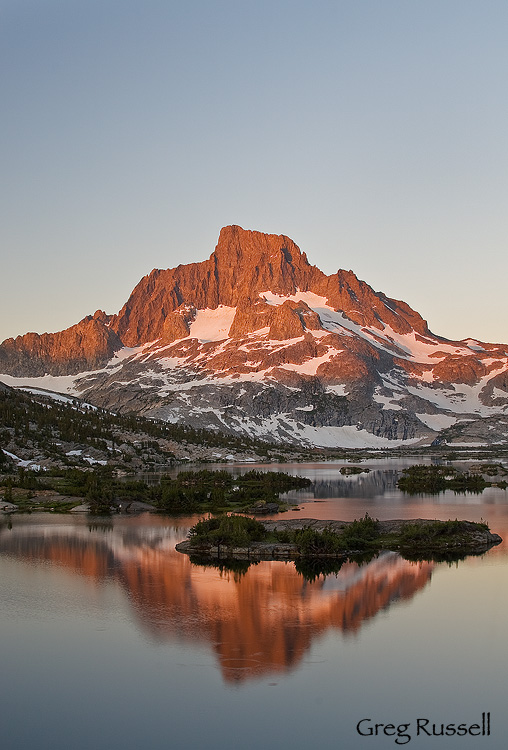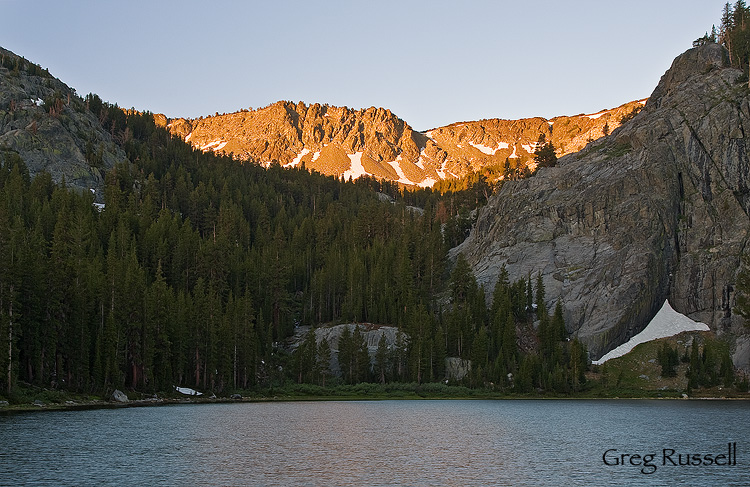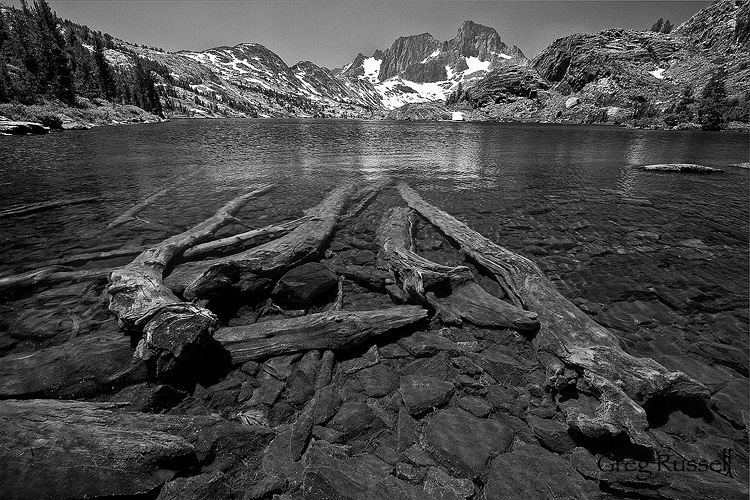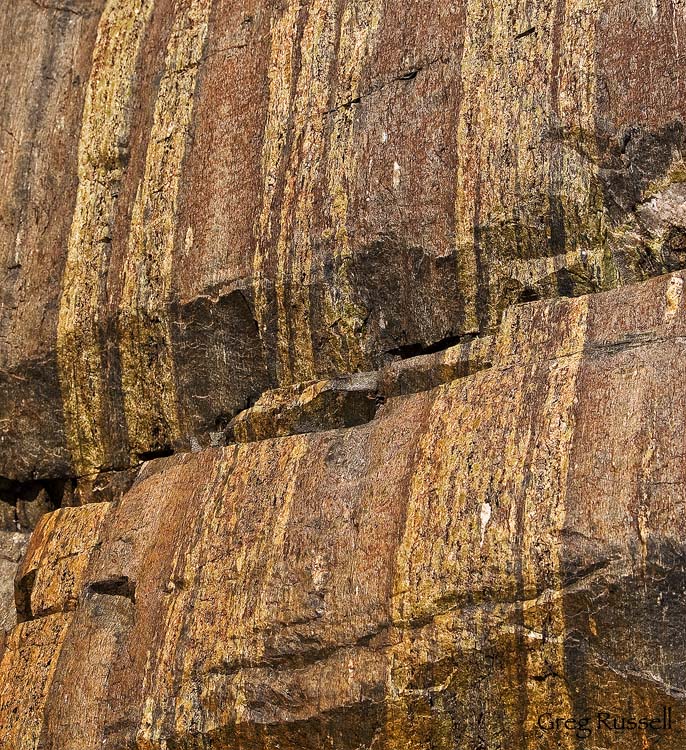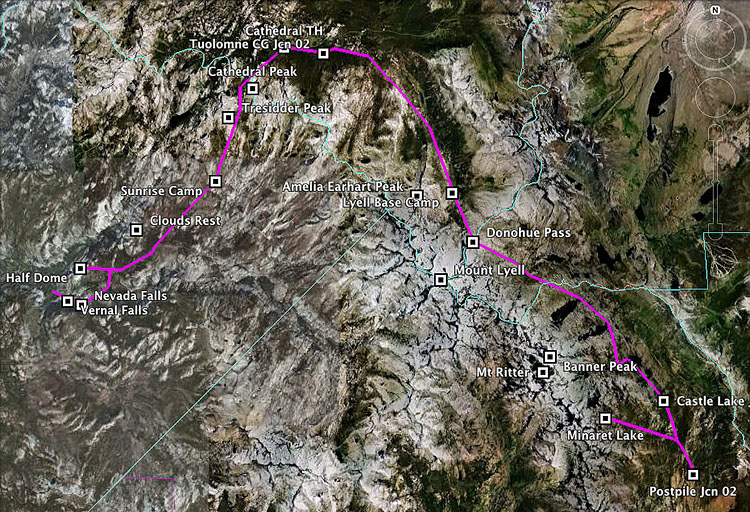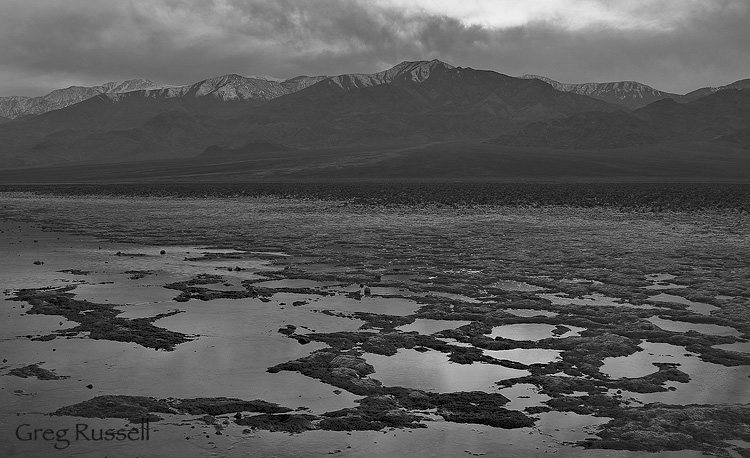After leaving Thousand Island Lake, we continued north on the John Muir Trail, over Island Pass, and toward Donahue Pass. The summit of Donahue Pass marked not only the entrance to a new watershed, but also the border between the Ansel Adams Wilderness (Inyo National Forest) and Yosemite National Park.
As expected, climbing 1300′ from Rush Creek to the summit of Donahue was not super enjoyable, and neither were the clouds of mosquitoes–probably the worst we’d encountered on our trip so far. At one point, I set my pack down to have a snack, drink, and to rest my shoulders, and I counted about 40 mosquitoes on the shoulder straps! However, bigger things were afoot today, as we watched the cumulus clouds condensing above us, and the thunderheads starting to build! How exciting…perhaps my “curse” of photographing a cloudless Sierra would finally be broken.
By the time we arrived at the summit of Donahue Pass, the clouds were thick and thunder was rumbling all around us. This is when my inner photographer began battling with my common sense. The landscape on the Yosemite side of Donahue pass is among the most beautiful I’ve seen–fields of rich red Indian Paintbrush, gorgeous hanging valleys, a truly stunning alpine environment. However, something inside tells me that its unwise to be above timberline when there is active lightning. We chose to err on the side of survival and didn’t linger long for photos.
Despite my regrets about that, we did arrive in the bottom of Lyell Canyon with enough daylight to allow me to explore pretty extensively with my camera. All of the side streams in the area (collectively known as the “Lyell Forks” of the Tuolumne River) and ever-present wildflowers, I had a fantastic time. Plus, much to my pleasure, the mosquitoes were not bad–compared to the previous few days, I felt like they were nonexistent. Yay!
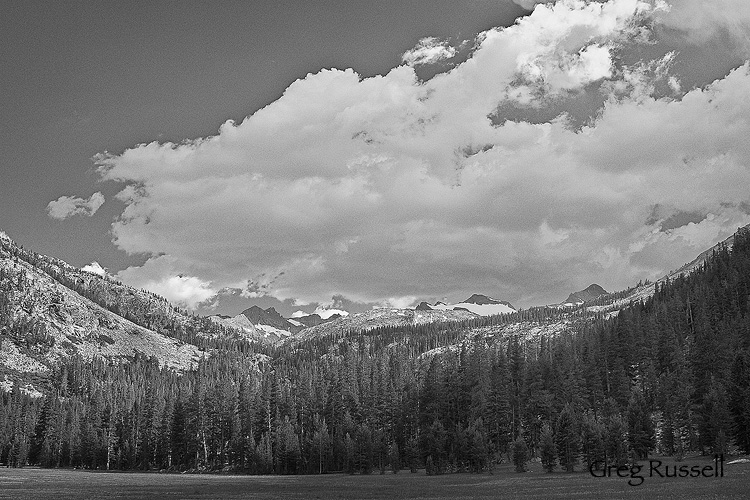
Lyell Canyon and Donahue Pass, July 2010
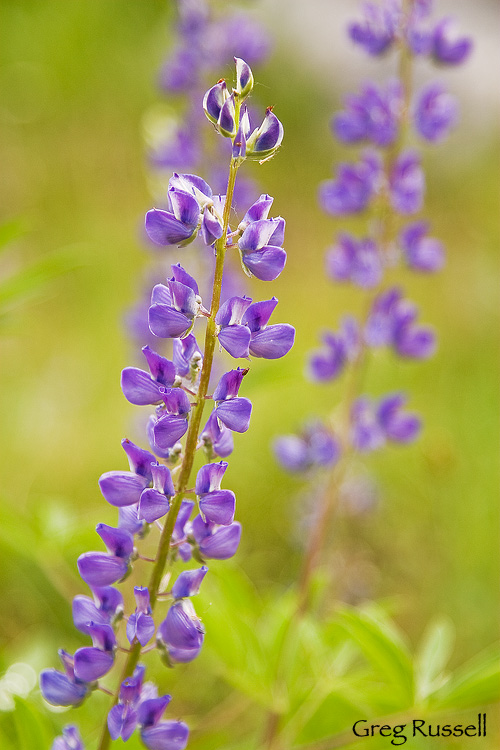
Lupine, July 2010
After dinner, I took another walk, heading back south, toward Donahue Pass. My knees prevented me from hiking too far, but I did find some fantastic corn lilies (Clintonia borealis), which make fantastic abstract photos during the summer when they’re at their peak.
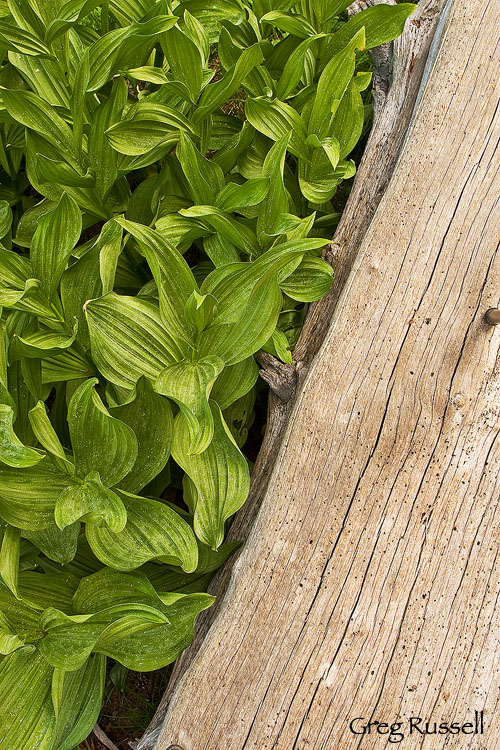
Corn Lilies, July 2010
Finally, while walking back, I saw a fantastic sunset materializing through the trees. While I didn’t have time to run back out to the open meadow, I did find an open area where I could use the river as a foreground element. I can’t really complain at the way this image came out, making a fantastic ending to the day.
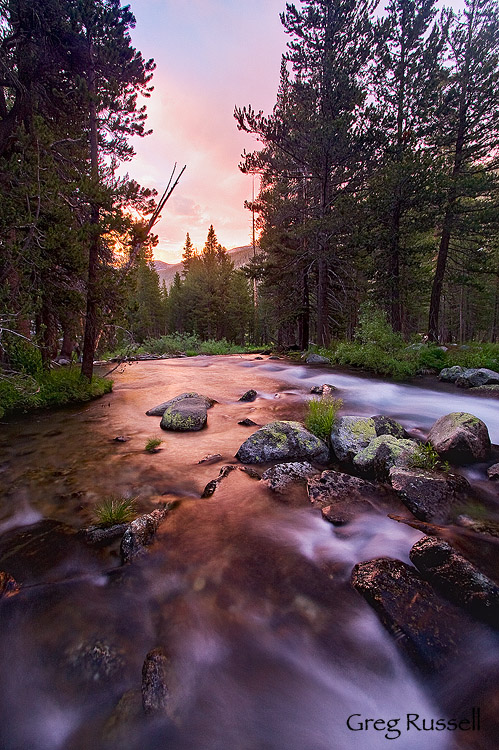
Lyell Forks of the Tuolumne River, July 2010
As I laid in the tent that night, I looked forward to meeting my wife and son the next day in Tuolumne Meadows, and drifted off to sleep with visions of flush toilets, cold beer, and the Whoa Nellie Deli dancing through my head, not necessarily in that order.
To see all of my Yosemite images, click here.

